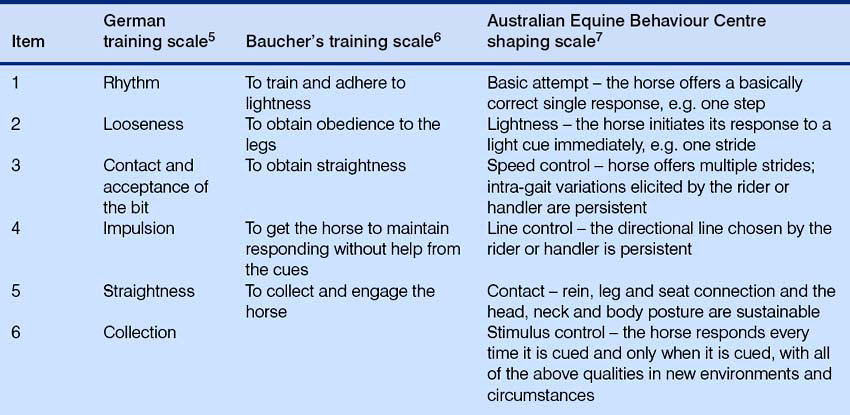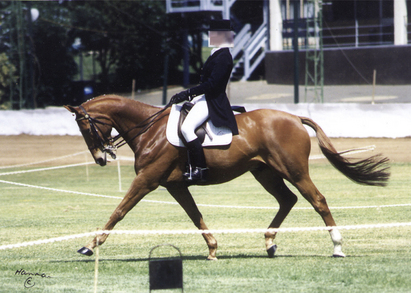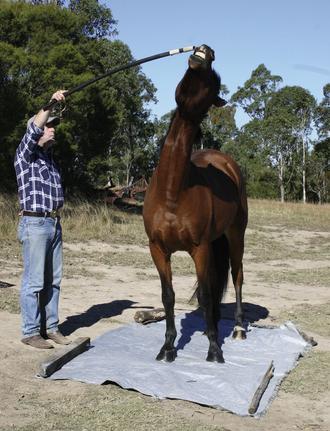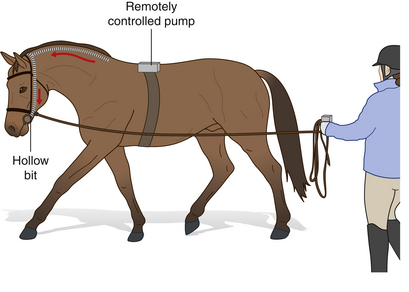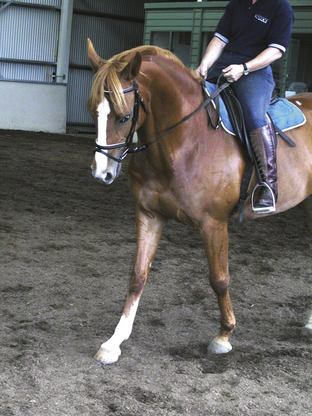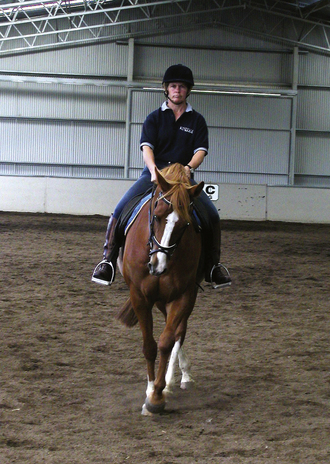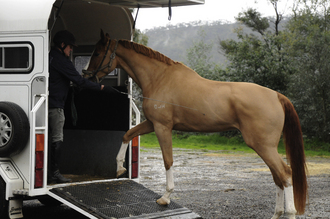Chapter 13 Equitation science
Chapter contents
Background
There are a number of reasons for training problems. Many of them are considered from an ethological perspective in Chapter 15. They also include inconsistencies in the terms that are used, what is understood by them and the way in which training techniques are applied. The current chapter explores what horses can learn from their interactions with humans and encourages readers to engage with the emergent discipline of equitation science.
What can be learned?
Behavior is the product of the interaction of an animal’s genes and its environment. As with all mammals, genetics only predispose the horse to behave in certain ways – actual behavior on any occasion will be the result of a combination of that predisposition and learned behavior in the environment or context. Learning can emphasize or suppress genetic tendencies, so that all equine behavior can be modified by experience. For example, the sex drive of a stallion can be modified by learning to the extent that a well-trained stallion behaves obediently around mares. In general, horse riders and trainers give far too much credence to genetic predispositions and pay insufficient attention to the potential for learning. Rather than being destined to be that way, vicious stallions, ‘crazy’ horses, horses that pull, shy, kick, bite or whatever are products of their life experiences and training.
Horses for courses
It is important to be mindful that the behavioral responses required of horses, even at the highest level of dressage, are not beyond their physical capabilities. While physical limitations due to conformation may affect the quality of the training outcome (see Ch. 7), dressage movements are essentially derived from natural movements innate to the species.
The sorts of conformation problems that limit performance in dressage and jumping generally involve the height ratio of the wither and the croup. If the wither is substantially lower than the croup, then horses generally have some difficulty collecting, which is a critical component of dressage and jumping training. Such croup-high horses are frequently found in the breeds selected for speed, such as Arabians and Thoroughbreds, and incidentally in the plains zebra (E. burchelli). Conversely, wither-high horses, such as all of the draft breeds, have formed the genetic basis of the modern performance dressage and jumping horse (Fig. 13.1). Interestingly, as the speed and endurance phase of three-day-eventing has become progressively reduced due to welfare considerations and, correspondingly, the relative influence of dressage phase on overall performance has increased, the predominance of the Thoroughbred in that sport is now giving way to the slower and less enduring but dressage-designed warmbloods (draft and Thoroughbred crossbreds). The emphasis in dressage on so-called uphill (i.e. withers-high) conformation is likely to have contributed to the breeding of foals that, quite without training, show a positive diagonal advanced placement at the trot in that the hindfoot of a diagnonal pair commences the stance phase before the corresponding forefoot. Horses with this action even before any training seem to command a premium price but whether this type of gait truly remains a trot (which, by definition, has a two-time beat) is the subject of current debate. Some commentators are concerned that selection of extraordinarily flamboyant forelimb action that can impress dressage judges may compromise the purity of gaits.

Figure 13.1 Examples of (A) a croup-high and (B) a wither-high horse. The central superimposed image illustrates the relative proportions (the blue line representing the outline of the croup-high Thoroughbred).
((A) Thoroughbred stallion ‘Rancher’, photography by Neil McLeod. (B) Warmblood stallion ‘Rohirrim Tintagel Magic’ owned by Victoria Kendall-Hawk, photography by Julie Wilson.)
Another effect of the selective breeding of ‘uphill’ horses with more showy paces has been the emergence in the past few decades of young horse classes and so-called ‘auction riding’. This has encouraged the temptation to rush the young horse’s training so that it appears collected at a younger age than in earlier times. This has led to trainers abandoning the age-old tenets of taking years to train horses to reach higher levels of dressage and to avoid some of the principles of correct training such as shaping.
Traditional dogma
It is appropriate here to challenge some of the central features of traditional equine educational dogma. In some sectors of horse-training, such as the sport of dressage, the cues and signals used to elicit alterations in the mobility and posture of horses are known as ‘aids’. This word is antique in origin, derived from the French verb ‘aider’, meaning ‘to help’. The notion that cues in any way offer assistance to horses is anthropocentric and has been abandoned in our text because it nourishes the notion of the ‘benevolent’ horse, the horse that is a willing partner. Horse-trainers should respectfully recognize that training is an act of equine exploitation rather than equine enlightenment, and modern equitation must take full account of the cognitive processes of the horse.
Despite empirical data that demonstrate the phenomenal memories of equids1,2 and the likelihood that horses do not need to be reminded how to execute their schooling tracks, trainers remain committed to regular schooling activities that usually comprise repetitive maneuvers involving 10-m circles, 20-m circles, serpentines and so on. If horses can indeed learn after a single trial only,3 it could be argued that these exercises are of more importance to riders than to horses. At the same time many riding tutors maintain that through such drilling the horse develops the musculature required to maintain self-carriage (see Glossary) without having learned anything. This circumvention of the need for any understanding of learning theory is unfortunate because it contributes to the mystification of equestrian technique by denying the central role of negative reinforcement.
Horses are adept at habituation to riding-related stimuli such as the girth, saddle, bridle, boots, the sight and general movements of a person on their backs, as well as to environmental aspects of their habitat. Trainers must ensure that horses do not habituate to the training signals, an outcome which commonly shows up as hard mouths and laziness to the rider’s leg signals. The schooling aspect of training sessions should make it possible to elicit maneuvers with increasingly subtle signals, providing that the subtle signal precedes and is contiguous with the reinforcement. With stimuli (rein, leg, whip-tap) using the pressure-release system, there is already an inherent subtle cue: the initial light increase in pressure. This precedes an immediate increase in pressure if there is any lack of response from the horse. The pressure is subsequently released immediately when the horse gives the desired response. The initial light increase is the mild cue that signals each intervention and the period of stronger pressure disappears. Later on, through repetition of this protocol, the horse responds to extra cues, including the subtle changes of the rider’s seat and position, through classical conditioning.
An industry survey (reported by Harris4) notes that 25% of the time owners spend with horses involves schooling (Fig. 13.2). Riders should be clear about the purpose of this activity. The aim in the preparatory work for each schooling session should be to assess the progressive qualities of the horse’s basic responses within each gait (immediacy of reaction, reaction to the light cue, rhythm, straightness, adjustability, suppleness and unconditional responses – does the horse give the same response wherever and whenever the rider signals?). Clearly, optimizing these outcomes will tend to improve the horse’s dressage scores. Show-jumping and eventing, if executed correctly, also rely on the same principles, i.e. rhythm (self-maintained rhythm and speed), straightness (self-maintained line and body straightness), and contact (self-maintained leg, seat and rein connections and outline). At any speed, the more correct the execution of turns and lines, the better the performance. Therefore, instead of slavishly tracing circles in the manège, riders should aim to refine the horse’s responses through a process of shaping (see Ch. 4). Effective shaping relies on the trainer delaying the reinforcement until the animal offers a closer approximation of the desired response than has been established in the past. In equitation, it demands attention to the placement of each foot to obtain exquisite control of locomotion, preferably before the trainer focuses on qualities such as neck flexion and outline. The concept of a training scale in equestrian manuals often departs from the notion of linear improvements. For example, the German scale (Table 13.1) does not address the acquisition of a basic attempt or stimulus control and therefore lightness of the pressure signals. In the German scale, straightness is designated to be trained after impulsion. Since impulsion requires bilaterally uniform power from the horse and straightness implies even power of the legs (a horse that is not straight is drifting), we challenge the veracity of the German scale. Straightness and rhythm are interdependent and as such should be adjacent on a training scale.
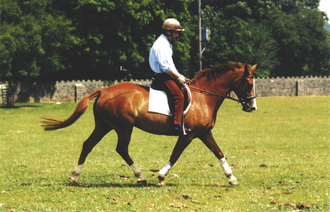
Figure 13.2 Horse being schooled.
(Reproduced by permission of the University of Bristol, Department of Clinical Veterinary Science.)
Having acknowledged the undoubted benefits of absolute obedience for many competitive disciplines, it is also worth remembering that horses that retain some innate responses may be much safer in some novel and complex environments such as may be encountered during trail-riding.
Shifting the mindset
The prevailing mindset throughout history has been to abandon, one way or the other, the less ‘willing’ equids because they have been regarded as having some moral (and even spiritual) involvement in the training process so that they are assumed to have ‘decided’ that they would not comply. These are the horses that, instead of learning what is required of them, learn to resist and escape and become the bolting, jibbing, balking, refusing, rearing, bucking and shying animals that are regularly described in books on so-called problem horses. These are the animals that change hands rapidly with the consequent addition of different commands and consequences that exacerbate the inconsistency of earlier training and increase the pressures that have caused the problem in the first place.
Learning theory provides principles and guidelines for training. While these are usually adhered to by good trainers, they are not proposed as the first principles in contemporary horse-training literature. It seems strange that throughout the world, the language of learning theory is almost never taught as a basic first principle in riding schools. We submit that these omissions precipitate confusion and therefore conflict in horses and ultimately contribute to welfare problems and wastage.
Training is most rapid and consistent and training-related stress is minimized when training practices exactly match an animal’s mental abilities. This is evident in the results of great scientific animal trainers such as Marian Bailey, a student of Skinner, and those largely responsible for the tremendous advances in training cetaceans, pinnipeds and canids. The International Society of Equitation Science (ISES, www.equitationscience.com) has proposed eight principles as a means of identifying horse-training systems that align with what we know about learning theory as well as encouraging those who do not to employ them. The application of these principles is not restricted to any single method of horse-training, and ISES does not expect that just one system will emerge. There are many possible systems of optimal horse-training that adhere to all of these principles.
1 Understand and use learning theory appropriately
Learning theory explains positive and negative reinforcement and how they work in establishing habitual responses to light, clear signals. (Note that ‘positive’ and ‘negative’ when applied to reinforcement are not value judgments, as in ‘good’ or ‘bad’, but arithmetical descriptions of whether the behavior is reinforced by having something added or something taken away, e.g. pressure. For example, when the horse responds to a turn signal and the rein pressure is immediately released (taken away), negative reinforcement has been applied.)
It is critical in the training context that the horse’s responses are correctly reinforced and that the animal is not subjected to continuous or relentless pressure. Prompt and correct reinforcement makes it more likely that the horse will respond in the same way in future. Learning theory explains how classical conditioning and habituation can be correctly used in horse-training.
2 To avoid confusion, train signals that are easy to discriminate
There are many responses required in horse-training systems but only a limited number of areas on the horse’s body to which unique signals can be delivered.
From the horse’s viewpoint, overlapping signal sites can be very confusing, so it is essential that signals are applied consistently in areas that are as isolated and separate from one another as possible.
3 Train and shape responses one-at-a-time (again, to avoid confusion)
It is a prerequisite for effective learning that responses are trained one-at-a-time.
To do this, each response must be broken down into its smallest possible components and then put together in a process called ‘shaping’. As learning becomes consolidated, responses may be elicited increasingly closer together, but not simultaneously.
4 Train only one response per signal
To avoid confusing the horse, it is essential that each signal elicits just one response. (However, there is no problem with a particular response being elicited by more than one signal.)
Sometimes a response may be complex and consist of several trained elements. These should be shaped (or built up) progressively. For example, the ‘go forward’ response is expected to include an immediate reaction to a light signal, a consistent rhythm as the animal moves in a straight line and with a particular head carriage. Each of these components should be added progressively within the whole learned response to a ‘go forward’ signal.
5 For a habit to form effectively, a learned response must be an exact copy of the ones before
For clarity, a complete sequence of responses must be offered by the horse within a consistent structure (e.g. transitions should be made within a defined number of footfalls).
Habit formation applies to transitions in which the number of footfalls must be the same for each transition and this must be learned.
6 Train persistence of responses (self-carriage)
It is a fundamental characteristic of ethical training systems that, once each response is elicited, the animal should maintain the behavior.
The horse should not be subjected to continuing signals from leg (spur) or rein pressure.
7 Avoid and dissociate flight responses (because they resist extinction and trigger fear problems)
When animals experience fear, all characteristics of the environment at the time (including any humans present) may become associated with the fear. It is well-known that fear responses do not fade as other responses do and that fearful animals tend not to trial new learned responses.
8 Benchmark relaxation (to ensure the absence of conflict)
Relaxation during training must be a top priority, so when conflict behaviors are observed in the horse, we must carefully examine and modify our training methods so that these behaviors are minimized and ultimately avoided. Relaxation does not imply dullness but instead, clear consistent training should result in a horse that is attentive. For example, while the horse’s tail should be loosely carried, the ears should move as each cue is elicited.
To recognize the importance of calmness in enabling effective learning and ethical training, any restraining equipment, such as nosebands, should be loose enough to allow conflict behaviours to be recognized and dealt with as they emerge.
In the normal distribution curve that constitutes the components of what is termed ‘trainability’, the range of horses that are ‘good’, ‘eager-to-please’ and in fact easy to train in the ad hoc systems that comprise contemporary training, occupy a relatively small portion at the top of the trainability scale (Fig. 13.3). It would seem that this could be significantly increased by introducing a scientific approach to training and management and utilizing the principles of learning theory so that we can expedite training, reduce training-related stress and vastly improve horse–human interactions. Equitation science aims to demystify the training of horses. Furthermore, by exploring best practice in horse training, it complements some of the techniques in behavior modification that appear elsewhere in this book (see Chs 1, 4 and 15). Equitation science has an extremely promising future since arguably it is more humble, global, accessible and accurate, and less denominational, commercial, open to interpretation and misinterpretation than any rigid methodology. It has the potential to be the most enduring of all approaches used to train the horse.
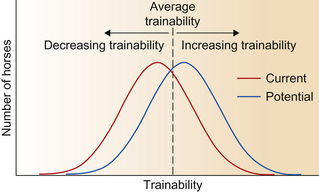
Figure 13.3 Theoretical normal distributions to show how the number of horses that cope with training may be increased by using more enlightened approaches including greater clarity of cues, better timing, greater consistency and more flexibility in educational approaches.
(Courtesy of Peter Thomson.)
Welfare and wastage
There are welfare implications in failing to identify adequately the mental abilities of all animals in the care of humans. Overestimating an animal’s mental ability must be seen as a major contemporary welfare issue when it manifests as abuse, wastage, stress and conflict behaviors.
As horse trainers and handlers, our understanding of the horse’s mental abilities is based largely on a centuries-old tradition of horsemanship. Horse-training textbooks (including pony club texts) throughout the world take their reference from traditional horse practice or from the ‘great masters’ of horsemanship who lived in the past 500 years. Such texts generally abound with words to describe horse behavior that imply reasoning abilities (Fig. 13.4). They generally assume that the horse ‘understands’ his training rather than simply responding through reinforcement. Training a horse within the traditional anthropomorphic framework has a number of potentially negative implications for horse welfare, as well as for the safety of riders and handlers. For example, if you believe that a horse complying with your commands is showing a willingness to please you, then you may also believe that when the same horse fails to comply he is actively seeking to displease, defy, undermine and even embarrass you. This belief system explains why so many riders feel justified in physically punishing horses for failure to perform. So while a coach may instruct a child to whip her pony as a punishment when it fails to jump a fence, an equitation scientist primarily sees the lack of response as evidence of pain or a training deficit. A scientific approach acknowledges that lack of forward movement over the fence is but one of myriad other responses that the pony failed to offer, and that whipping after the error is not going to help the pony identify the correct response in the future. [We offer this specific example, not least because this issue of children whipping horses is emerging as an important topic in animal welfare debates that are being informed by equitation science.]
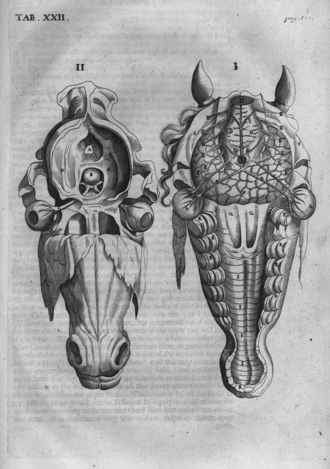
Figure 13.4 Etching of cranial dissection of the horse showing how 17th-century veterinary anatomists attributed to the horse a much larger brain than it truly has.
(From The Anatomy of an Horse, by Andrew Snape, published by J Hindmarsh, Cornhill, 1686.)
Furthermore, the anthropomorphic view of the horse is not supported by scientific examinations, which suggest that equids possess little or no higher mental abilities. Mindful of this, equine ethologists avoid interpreting responses as reflections of human emotions and values. They do not do this to demean horses but to recognize that there are often simpler and more plausible explanations for most of the horse’s responses.
Training does not always go according to plan. Some horses are predisposed genetically to trial undesirable responses rather than desirable ones. Some horses learn to evade stimuli most effectively when the stimuli are predictable by association, e.g. in a schooling context. Horses that have been subjected to inconsistent signals, such as the lack of release of pressure, or to the pain of bad schooling, often acquire the reputation of being difficult and are sold on to homes where more often than not the harshness of schooling is escalated. This contributes to disturbing slaughter statistics. For example, in a French study of more than 3000 non-racing horses, some 66.4% died aged between 2 and 7 years.8 Unlike data from the racing industry,9,10 this wastage was not attributed to orthopedic or respiratory disease but more likely to inappropriate behavior. The welfare implications of this wastage suggest that veterinarians and equine scientists should become well versed in learning theory since it is the basis of good training, continuing education and behavior modification. The wrong approach to training can have consequences far worse than simple time-wasting.
The emotiveness in the horse-riding welfare debate has fostered empirical research into the ethics of equitation and an analysis of some of the more unorthodox interventions that arise during handling, training and competition. According to Derkensen and Clayton,12
‘Knowledge of equitation science may help veterinarians play a more effective role in preventing injuries to horses and their trainers, and in recommending more effective methods of treating and retraining equine athletes when injuries do occur, thereby improving sport horse wellbeing.’
The relevance of learning theory
Modern behavioral psychology has established learning theory as the cornerstone of elegant training programs in many laboratory and performance species, but is only now beginning to become incorporated in any significant way into contemporary equine training or into the education of equestrian coaches. Because horse-training was well entrenched in its ways by the time Pavlov, Thorndike and Skinner came along, riders have not been altogether receptive to these scientists’ findings.
The assumption that the horse is a willing partner and that the aim in coaching is largely to train the rider’s biomechanics to merge into those of the horse is widely accepted in dressage circles. While it is not disputed that, after the consolidation of operant responses, this ideology plays some part in the later development of horse training, the overall approach neglects trial-and-error learning (operant conditioning). Problems arise when equestrian methodologies focus on classical conditioning before or instead of the more deeply ingrained pressure-release responses through trial-and-error learning. This is because confusion (and therefore conflict) often arises in horses unless the basic responses have been installed thoroughly in the first place by trial-and-error learning through negative reinforcement. The fundamental trial-and-error responses under-saddle comprise stimulus control of acceleration and deceleration in gait, limb tempo and stride length, turns of the forequarters from each rein and turns of the hindquarters responses from the rider’s legs. Training the horse by simple cue associations neither ensures controllability in all environmental contexts, nor provides the range of responses that is required for ultimate control in the Olympic equestrian disciplines of show-jumping, horse-trials or dressage. Furthermore, the randomness in behavioral response that horses are able to exhibit when not under complete handler/rider control results in inconsistent stimulus–response relationships which frequently cause chronic stress.16 It is assumed that the prevalence of such methodologies has arisen in the absence of a logical framework based on learning theory.
The cognitive revolution of the 1970s rejected behaviorism. Its legacy is the ‘tendency to underestimate the power of Skinnerian conditioning to shape the behavioral competence of organisms into highly adaptive and discerning structures’.11 This probably contributed to the resistance to the understanding of learning theory in those domains within animal training where it had not already been accepted. Indeed, many texts on equine behavior seem to imply subjective mental experiences in horses.13–15 It would be a scientific error to assume the existence of abilities in the absence of data. Even if there are no data supporting the negative or affirmative case, assuming subjective mental experiences in animals would constitute an unacceptable rejection of the null hypothesis.11 Moreover, most of the published peer-reviewed data strongly indicate that horses lack insight into their instinctive behaviors. As we shall see in the discussion of equine mentality that follows, there are strong selective pressures for this lack of insight to occur.
Horse whisperers
It should be acknowledged that, when trainers apply the principles of learning theory, they generally achieve desirable results. Throughout history, there have been riders who were adept at putting learning principles into practice, but who did not have the advantage of a theoretical basis. They were considered ‘natural horsemen’. Biographies of gifted riders repeatedly suggest that they were at a loss to explain their talents. Unfortunately, this has led to the myth of horse whispering and the mistaken belief that training is more art than science. This set of beliefs has led to a consequent denial of the benefits of applying structured behavioral principles to horse training.
Although the equine industry is steeped in tradition, its stakeholders have demonstrated that they can nonetheless take heed of new information, especially when it is demonstrated convincingly. The new global wave of horsemanship, as expounded by the ‘horse whisperers’ and ‘new age’ trainers, is slowly raising awareness of alternative ways to view the horse and approach horse-training. By approaching the so-called ‘problem horse’ with a different set of tools, these trainers have provided some enlightening solutions to problems that have presented difficulties for traditional equestrian ideology.
Sometimes the horse-whispering myth provides an irresistible superhuman kudos to the practitioner. But perhaps the greatest limitation of many horse-whispering systems is that training practices are once again locked into method without the illuminations and extrapolations provided by learning theory. Their techniques have arisen from the historical trials of practical horsemanship. Furthermore, the paranormal mystique that surrounds horse whispering and the tremendous variety of techniques tend to confound any search for a unifying principle. Thus horse whispering is often applied without the sort of paradigm shift in thinking about the cause of the problems that we have seen in the behavior modification of other domestic species such as dogs. For this reason much of the current wave of ‘new age’ horse training remains within an anthropocentric and anthropomorphic framework. This is unfortunate because any assumption that the horse is motivated by anything other than its instinctual drives adds an unnecessary layer of complexity to its training. Anthropomorphic explanations of how compliant horses ‘understand’ and ‘oblige’ us are unhelpful for at least two reasons: first, they mystify the training process for novice riders; and second, they imply that non-compliant horses are somehow malevolent. This explains why in one text of equine behavior modification, some horses have even been described as ‘depraved’.18
Some practitioners convey an appealing message: that horse training is simply a matter of demonstrating leadership or dominance in a manner analogous to that shown among horses to each other. Anthropocentric labeling of human–horse interactions makes the interpretations by some proponents of natural horsemanship sound irrefutably plausible and humane. Unfortunately, such labels can be misleading, contradictory and constitute potential barriers to effective training. They can also lead to misunderstanding, conflict and reduced welfare for human and equine participants. One of the potential dangers in adopting an anthropocentric framework to explain horse motivation is that the trainer/rider may assume that a horse knows what the human wants. This assumption permits humans to issue unclear cues, leading to frustration and perhaps even feelings of deception when these fail to produce the desired outcome in the horse.
For example, some practitioners insist that horses in roundpens signal to their human trainers as they would to high-ranking herdmates, and further that they are motivated to be with those humans simply because they ‘respect’ them. In contrast, it is possible that horses in roundpens are showing distance-reducing affiliative signals that are being misinterpreted.18 However, recent empirical studies suggest that the responses of horses to humans in confined areas, such as roundpens, are context-specific19 and may rely more on negative reinforcement than on innate equine social strategies.20 These findings prompt scientists to question the interpretations of horse responses to roundpen interventions commonly offered by some practitioners and offer more scientific, measurable interpretations in horse handling and training.
Unfortunately, some of the ‘modern’ training systems are simply recycled in that they are just old horsemanship skills repackaged in a pseudo-scientific wrapper. Predictably, these systems do not always follow the principles of the psychology of training as clearly as they should. Some retain familiar pitfalls such as: multiple signals given concurrently; different responses for a single signal; lengthy delays in reinforcement.
Finally, a note about the increase in the popularity of roundpens that has resulted from the global interest in ‘whispering’ and relies on an understanding of the flight zone of an animal. A tame animal has a flight distance of zero. Animals are acutely aware of this zone of safety around them so that when it is breached, they move away. In a roundpen situation the horse stops moving when the trainer retreats from the flight zone (Fig. 13.5). It seems that there is sometimes a perceived notion that creating an emotional crisis during roundpen training is actually desirable, probably because it forces the horse to offer a change in ‘attitude’ after which it accepts the human as ‘leader’. The simplest explanation of this change is that the horse’s running away in the roundpen does not increase the distance between it and the human, thus allowing the trainer to use actions and postures to reinforce slowing and shape the horse to approach. Similarly, the practice of lungeing (see Glossary) hyper-reactive horses before training can be seen as problematic as it is often little more than an opportunity for the horse to learn and practice flight-related behaviors.
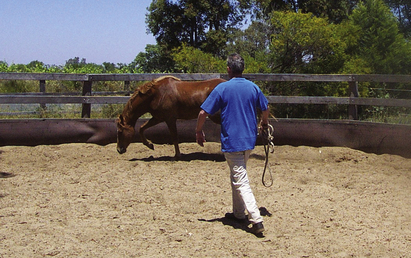
Figure 13.5 Round-pen work relies on an appreciation of the horse’s flight zone.
(Photograph courtesy of Portland Jones.)
We must exercise caution before advocating approaches to equine training that involve chasing horses and causing them to associate fear responses with any human interactions, because we now know that fear responses and associations are not as prone to extinction as other learned responses.21 The horse may well learn to approach humans, but the means does not justify the end, because, if Le Doux’s findings are to be given any credence, the experience of being chased can leave the horse with a more ‘hair trigger’ flight response. The danger is in the retention of flight-response associations, and its translocation to other interactions with humans. The implications for rider safety are profound.
The problems with contemporary training
By tailoring training strategies to the species’ mental ability, we can increase the efficiency of training and minimize misunderstandings in human–animal interactions. For example, when humans have expectations that animals ‘understand’ what is required, they often give inappropriate signals to the animals (such as delayed, inconsistent or meaningless reinforcements) that result in deleterious behavioral changes.22 Wiepkema16 indicates that unpredictability in the stimulus–response relationship causes conflict behaviors such as redirected and displacement behaviors. If these behaviors fail to satisfy the animal’s current motivation, the animal may learn that it is unable to improve its well-being. Not surprisingly, learned helplessness has been identified in domestic horses.23,24 Classically, this takes the form of reduced responsiveness and the appearance of lethargy. In essence, the animal shows evidence of having given up any attempt to improve its welfare. For that reason, it is sometimes assigned the synonym learned hopelessness. Although learned helplessness is a manifestation of compromised welfare,25 it is often referred to as ‘staleness’ in equestrian texts.
Trainers are frequently at a loss to explain the origin of the seemingly ‘naughty’ or ‘bad’ behavior in their horses. Their dilemma arises from the fact that they believe the horse has a temperament problem or ‘vice’, rather than seeing that it has a training problem, an enlightened view that releases the horse from responsibility for the problem and puts it squarely at the feet of the trainer. In most cases, and with the exception of horses that are responding to a painful lesion, the fault indicates that the signals trained by pressure-release in the early training of the horse were either incompletely installed or have since deteriorated through lack of attention to their integrity.
Equine mentality
Horses pass with flying colors the experimental tests of: their excellent memory;2 their ability to learn through instrumental conditioning (sometimes rapidly);14 their ability to discriminate; their powers of stimulus generalization; and how one learning experience can enhance their uptake of another.14 However, empirical evidence suggests that they have little or no capacity for reasoning or insight.22 From an anatomical perspective, Bermond26 uses the argument from analogy to propose that animals without well-developed prefrontal cortices (including horses) would be unable to perform the mental abilities (such as reasoning) conferred by such brain features. Furthermore, he contends that reasoning has a maladaptive downside in that it allows animals (i.e. humans) to project and prolong their worst fears, and develop psychotic behaviors. He states that ‘the prolongation of the emotional feeling (in humans) is a well known phenomenon and psychological defence mechanisms such as displacement, projection and suppression are, for example, unlikely to occur in the absence of this process’.26
Throughout evolution, grazing animals have been on the menu for predators. Being aware of such a plight would be maladaptive in terms of stress and interrupted foraging if a horse were slow, young, ill, lame, in foal, fearful of darkness or had a foal at foot. But horses never required higher mental abilities such as reasoning because, as Budiansky27 points out, grass (unlike a mouse!) doesn’t hide or require planning or ambush to catch it.
Reasoning is an expensive luxury and is most likely not selected for by the grazing niche. Brain tissue is many times more expensive to fuel than other tissues28 and is subject to strong selective pressure.29 The impoverished grazing niche that the horse has evolved to exploit adds an extra imperative for neural efficiency. Moreover the lack of higher mental abilities is adaptive for grazers such as equids, because it allows the formation of repetitive behavior patterns such as escape routines. The advantage of these ‘habits’ over more reflective mental processes lies in their speed of acquisition, and the immediacy and stability of reactions.22
Horse handlers frequently witness that horses have little or no insight into their own instinctive behavior. As humans we are astounded that an animal would maim or kill itself in the execution of pulling back from a tie-up post, thrash itself to bits in a trailer (float), or literally bolt towards solid obstacles, as is sometimes seen in cross-country phases of horse trials competition. The riders in the latter instance frequently believe that these horses are simply ‘keen’. Another sign of horses’ apparent lack of insight is that they have little concept of ‘form’. For example, many horse people have noticed that some horses show tremendous fear when confronted by changes in form of objects or even in conspecifics. If such horses have never seen a small white pony, they seem unable to extrapolate that it is a horse. Similarly, some horses (such as Topper in the case study in Ch. 11) seem unable to interpret correctly the form of their closest relative, the donkey, and react as if it were a potential predator. In a further example, if a familiar human enters a field occupied by horses and drops to her hands and knees to move quadrupedally among them, they will reliably flee. This shows that they fail to work out how the familiar biped transforms into the unfamiliar quadruped. Importantly, we cannot be sure at this point that the horses flee because they are in fear of predation. A simpler explanation is that they are responding to an aversive stimulus without necessarily assuming that it could catch and consume them.
Hard-wiring and habits
The horse is born with a neural template for all the different instinctive behaviors that it will require throughout its life. In a sense, the horse’s brain has the neural architecture of a ready-made internalized structure of the external world. Here the neural pathways are predetermined – the animal is born with a motor-pattern to walk, trot, canter, flying-change, suckle, startle at certain shapes, be especially aware around water, caves and ditches and be pre-programmed for sex later in life. This has been referred to as hard-wiring. An obedient horse is one that offers desirable learned responses which, under the control of humans, override instincts such as to run, eat, socialize and copulate in the presence of eliciting stimuli.
In the early stages of learning, associations form in the brain as simple, fragile pathways and networks. The more a particular response is practiced as a consequence of its eliciting stimulus, the more that neural network develops. After a number of repetitions, a repetitive behavior pattern (a habit) forms. Learned responses in mammals modify instinctive drives, and thus can override or enhance their expression. For example, horses can learn to jump obstacles by being trained to maintain forward locomotion and straightness when presented with jumps of steadily increasing height and aversiveness that they would otherwise avoid. Equally, with enough practice, unwelcome responses such as shying (Fig. 13.6) is shaped by learning, in that it frequently develops into a faster and larger leap sideways and may even evolve into a rear and spin away.
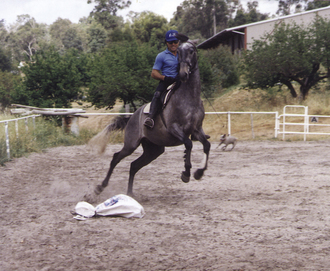
Figure 13.6 Shying horses learn that evasive responses are effective means of reducing their exposure to aversive stimuli.
(Photograph courtesy of Sandra Hannan.)
Horses are highly motivated to seek freedom from confinement, pressure or effort. Panic and fearful responses are often the vehicles of their freedom and, when horses bolt, buck or rear, the freedom associated with shedding predators from their backs is highly rewarding. It is therefore not difficult to understand why expressing the flight response is inherently reinforcing. Evolution has bequeathed to the horse automatically hard-wired patterns of behavior, such as bucking, because of their high survival value. It is not surprising that these patterns of behavior may be subject to one-trial learning, and that they themselves are modified by experience, so the horse can begin to adopt natural responses (that profit it) rather than the responses the rider wants. Such equine strategies prompt traditional horsefolk to label the horse as nasty or vengeful while in truth it is simply expressing a summary of its genetic predispositions and previous training.
Ineffective rewards
Patting the horse (Fig. 13.7) is an overrated reward endemic among equestrians. One of the dangers of patting the horse as a reward is that it can become the focus of our reinforcement system to the detriment of the release of pressure. Indeed some riders can be seen patting their horses while still pulling on the reins. Sometimes too the distinction between patting as a reward and slapping the horse on the neck as some kind of punishment is a blurry one indeed.
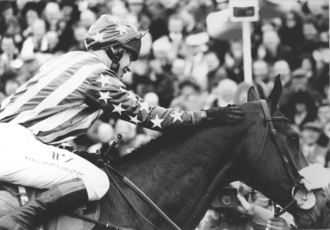
Figure 13.7 In many cases, patting may be irrelevant to horses.
(Photograph courtesy of Sarah Brooks.)
Horses are not born with an innate understanding of patting; it is at best a secondary reinforcement. As a secondary reinforcer, it would need to be associated consistently with a primary reinforcer (such as food) after an act (and just before the food). However, scratching at the lower neck and withers is a different story altogether (see Ch. 10). Feh and de Mazieres30 propose that because grooming at this site lowers heart rate more than grooming of any other area of the body, it produces relaxation.
If we touch the horse and say, ‘good boy’ (secondary reinforcer) whenever we feel pleased with it, we run the risk of extinguishing associations with primary reinforcers (see the section on using reinforcers in Ch. 4, p. 102), and thus at best these things can come to mean ‘I like you’, but not ‘well done!’. In animal training, failure to consolidate the attachment of rewards to responses will render such rewards as background noise. Thus the most optimal use of ‘good boy’ is to use it as a secondary reinforcer at the precise moment of the desired behavior and follow it up with food or wither caressing.
Conflict behaviors – the manifestation of problems
Conflict
In the natural habitat or indeed in many domestic contexts, horses are rarely frustrated for long because they are free to attend to their basic motivations. For example, in agonistic encounters they can compete and resolve disputes with other horses. When frightened, they can flee. If faced with hunger, they can search for and consume forage. Whichever way, the conflicts between competing motivation will usually be resolved very rapidly.
Behavioral responses have evolved to address their current motivations (primary reinforcers), including hunger, thirst, sexual desire, and freedom from predators, pain and discomfort. Throughout their lives horses learn to offer responses that satisfy these needs. Domesticated horses learn during their early training that the pressure of the bit via the reins disappears when they stop or slow. They learn that the pressure of the rider’s legs or spurs disappears when they go forward. However, when horses consistently cannot obtain their freedom from such pressures, chronic conflict may arise which is detrimental. Importantly, chronic conflict as a result of training manifests in situations where the horse receives constant pressure or pain; it tends not to arise directly as a result of mild cues, although it does arise when random behaviors appear that are not under the stimulus control of those mild cues.31 Such conflict leads to greater and greater amounts of tension and a frustrated flight response (Fig. 13.8).
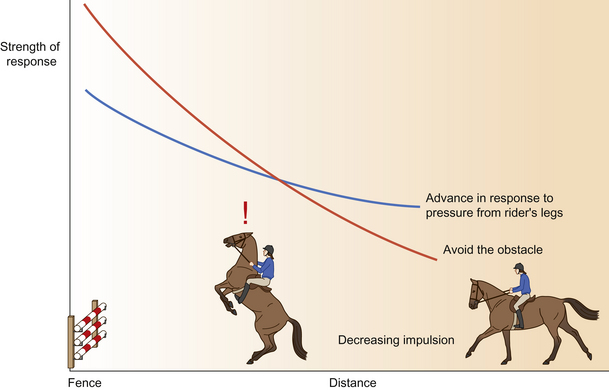
Figure 13.8 A horse that is reluctant to jump a fence may enter conflict if it fails to resolve the competing motivation to avoid the fence and to respond to pressure from the rider’s legs.
A useful example of conflict in equitation arises when horses are trapped between the rider’s ‘go’ and ‘stop’ signals. Unable to resolve the pain, they may resort to shying, spinning away, leaping, or bucking, depending on their genetic make-up. Shying may evolve progressively to rearing if a horse receives sufficient practice, motivation (pressures are not resolved) and reinforcement in the form of dislodging the rider and thus switching off the presure cues. In the absence of pain, bucking is a conflict response that arises from unclear installation of the ‘go’ signal when the reins are also pressuring the horse to stop to some extent. It is also made more likely when the leg signals are incompletely and inconsistently trained and when the horse has been poorly trained by benign cues (such as voice commands) that have no operant basis and the rider later has to resort to hitherto unused leg pressures. Most behavior problems in-hand and under-saddle can be resolved by retraining the pressure-release responses of ‘go’ and ‘stop’. This entails training these responses so that they are immediate, occur from a light version of the pressure, and that speed, direction, and consistent leg and rein connections are retrained.
As we see in the case study at the end of this chapter, problems loading into a trailer (float) are similarly resolved when the horse is retrained so that the ‘go’ signal from anterior lead rein pressure and the ‘stop’ signal from posterior lead rein pressure are re-established.
In training situations, chronic states of stress and conflict increasingly emerge when the association between cues and outcomes is not sufficiently predictable for the horse. An example of this is when a stimulus does not always lead to the same response and a deteriorated state of pressure-release responses prevails. It is within this schema that most manifestations of the so-called ‘problem horse’ arise. Therefore conflict behaviors, including loading and traveling problems, tension in-hand and under-saddle, and many other problem behaviors may have their roots in the confusion or incomplete installation of one or more of the basic pressure-release responses that are derived from their interactions with humans.
The more horses experiment with resistances and evasions and associate them with positive outcomes, even on a variable reinforcement schedule, the more they are likely to extinguish other learned responses.31 They are driven by their hard-wired instincts to escalate tension when they enter behavioral conflict. This can have the effect of alarming or annoying the rider, with a resultant loss of relaxation in the horse. This is contraindicated because better learning performances are achieved by horses that are calm, probably due to reduced interference in the learning process.38
The potential contradiction of rein and leg contact
The nature of the sport of dressage predisposes it to creating training-related conflict.31 Dressage requires the horse to maintain a constant contact with the rider’s hands (via the reins and bit), to be ‘on the bit’ (see Glossary), which entails the horse maintaining a flexed neck, while simultaneously responding to signals from the reins (Fig. 13.9). Because the horse is highly motivated to seek release from pressure (especially in his sensitive mouth), the process of habituating the horse to the rein contact is often problematic within a traditional training regime. The problem is that the horse must habituate to the level of normal ‘contact’ and learn to differentiate this from ‘stop’.31 The rules of dressage issued by the sport’s peak body, the Fédération Equestre Internationale, frequently state that the nasal plane should at all times be in front of the vertical.32 So it is fair to assume that this posture is desirable if horses are being prepared in a way that aligns with FEI rules. Unfortunately, the contemporary framework for dressage training places less emphasis on maintaining a light contact than on other aspects of the outline and locomotion of the horse. Thus, instead of training the horse to carry his head and neck freely on a light contact, it is not uncommon to find that the horse is heavy in the rider’s hands and develops conflict behaviors.
It seems probable that many riders see neck flexing as a proxy for evidence of training. A study of photographs of ridden horses advertised in a popular Australian horse magazine (n = 378) found that 68% had their nasal plane behind the vertical.33 Theoretically, however, a vertical nose does not necessarily mean that the horse is ‘on the bit’, especially if it is being held in that position by the rider’s hands.34 By definition the horse that carries itself ‘on the bit’ is adjusting to the additional weight of the rider by caudally shifting its nose, shortening and arching its neck to some extent, and bringing its hocks underneath it, and thereby is assumed to be shifting its center of gravity caudally35 with minimal contact or pressure from the reins. This postural change seems to have been predicated on the observation that the horse is able to show more impulsion in this posture.
It is worth considering how the concept of being ‘on the bit’ may have been corrupted by common equestrian parlance. It is a poor translation from the French ‘mise en main’, which meant, literally, ‘put in the hand’ and refers to the relaxation of the jaw and of the poll36 so that the horse ‘releases the mouth softly and loyally accompanies the hand wherever it moves’.37 The mise en main does not imply that the bit is necessary nor that the nasal plane should be vertical or that behind the vertical is desirable. The neck and head position of the horse, in what is considered to be correct schooling, where dorsoventral flexion of the proximal cervical vertebrae and atlanto-occipital joint (flexing at the poll, poll flexion or roundness) results in the nasal plane being approximately 6° in front of the vertical or 12° at walk.34
In addition, the poll should always be at the highest point of the neck, and this posture should be trained to be self-maintained by the horse, achieving what is known as self-carriage. This self-maintained posture is intended to optimize the balance of the ridden horse and its readiness to respond to the signals transmitted by the rider. Alterations to this carriage correlate with the horse’s level of education. As the dressage horse’s capacity to collect develops, his poll raises further and the neck arches more, which brings his nose somewhat closer to his chest than in less-educated horses. This results in changes in the topline physique of the horse over a period of time. These alterations are achieved through the anabolic effects of changes in velocity.7 It is likely that such changes facilitate the constant accelerations, decelerations and changes of line that characterize the horse in the sport of dressage as opposed to horses at liberty (which have been shown to carry their heads at angles that depend on the gait: walk 30.7 ± 11.5° in front of the vertical; trot 27.3 ± 12.0° in front of the vertical; and canter 25.5 ± 11.0° in front of the vertical).33 Furthermore, contemporary dressage training where the nasal plane is frequently behind the vertical obscures the signs of the onset of learned helplessness and offers few strategies to prevent it.31
Contact in the purist sense is simply the rider’s feel of the horse’s lips and tongue but not the premolar teeth or diastema so it therefore involves no pain, just a mild sensation. This level of contact should be targeted over the life of the horse in training. While seeking mild contact, which is implicit in the traditional notion of self-carriage, there will of course be times when the contact is escalated to produce a learned response, via operant conditioning, but the escalation is fleeting and is therefore unlikely to result in any learned helplessness. Sadly trainers and riders frequently prefer a much stronger pressure on the horse’s mouth that includes pressure on other parts of the mouth and therefore is more likely to involve pain and learned helplessness.
It is frequently, but erroneously, believed that the horse should be ridden with strong mouth pressure and then at some point later, sometimes years later, the horse will discover its own self-carriage. This notion defies the learning principle of habituation. Bloodlines of horses that have habituated to heavy rein (and spur) pressures and make it to the top in dressage, with seemingly few side effects, may be inadvertently selected for pain tolerance and possibly a propensity for learned helplessness.31
Such pain habituation may come at the price of deleterious effects on the horse’s mental well-being and deterioration in his behavioral repertoire. These changes may be easy to pinpoint (e.g. the horse may cease to turn or stop properly) or may be rather more obscure and general. For example, the horse may become generally sour and the manifestation of this may range from aggression during saddling to rearing or bolting. Since conflict typically manifests when the horse is least secure, he might develop separation anxiety, horse-shyness or ‘panic’ attacks away from home. We see a clear need for the empirical study of the relationship between training and stress responses.
The solutions
There is a series of ideas and strategies that practitioners can adopt to avoid and eliminate conflict in horses. By clarifying thinking and simplifying the messages that are sent to horses, we can ensure that their responses become more predictable.
The science of training
Although tradition has meant that learning theory has been overlooked by most equestrians, it is appropriate that readers acknowledge the extent to which scientists have developed ways of understanding the changes that occur in animals when they learn. Using the language of learning theory, some of the inconsistencies that confuse riders, and therefore ultimately horses, can be eliminated.
How to use negative reinforcement
Stimulus control can be defined as the degree to which a response occurs in the presence of a specific stimulus and does not occur in the absence of this stimulus.34 In horse-training, achieving stimulus control of the basic locomotory responses generally involves negative reinforcement, and the following steps have been proposed:31
1. The response to be trained is ‘targeted’ by the trainer. It is important that only the targeted behavior results in the removal of pressure/discomfort.
2. The pressure (aversive stimulus) should be increased during the ‘incorrect’ behavior until the targeted response emerges. During this phase, the pressure must not fluctuate or decrease because this constitutes a lowering of pressure and thus could be perceived as rewarding and thus be reinforcing.
3. If intermittent pressures are used (such as nudging by the rider’s legs or tapping with a dressage whip) there should be no increases in time-gaps between the intermittent pressures so this transient relief is not reinforcing.
4. At the completion of the targeted response, the aversive stimulus should immediately be removed. Removal of the aversive stimulus must be contingent upon the completion of the ‘correct’ behavior (Fig. 13.10).
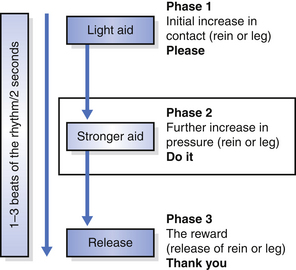
Figure 13.10 In horse-training using negative reinforcement, the operant contingency is expressed in this sequence: light signal, increasing pressure, release of pressure. In a short time the period of stronger pressure is removed and the horse readily responds to light signals.
(Reproduced with permission of Australian Equine Behaviour Centre.)
A continuum of reinforcing possibilities
One of the interesting characteristics of negative reinforcement is the sliding scale of aversiveness (Fig. 13.11). If pressure B is greater than pressure A, then it follows that relief from pressure B is more reinforcing than relief from pressure A. For example, consider mouth pressures on a linear scale from 1 to 10 where 1 represents the mildest of aversive stimuli and 10 represents the most painful, fearful and unendurable level of aversiveness, intolerable even for the shortest duration. At some point along the scale lies a threshold where the tolerable escalates to the intolerable.
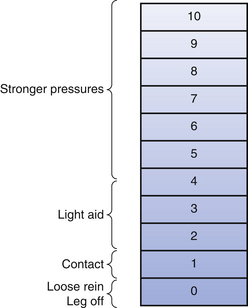
Figure 13.11 An arbitrary scale showing that the neutral stimulus, the discriminative stimulus (the light pressure signal) and the stronger motivating level of pressure can be imagined as a linear scale of pressure.
(Reproduced with permission of Australian Equine Behaviour Centre.)
In practical horse-training these mouth and body pressures are real; light cues occur in the lower scale, while the more motivating aversive pressures lie in the higher scale. Because equitation generally relies on a foundation of aversive stimuli, it is important to mention that, as most highly skilled trainers have noted, best practice is embodied in the use of the least aversive stimuli (the lightest cues). Furthermore, there are problems with using high levels of aversiveness because of its associations with the amygdala. Fear and aversiveness are interconnected, and because fear responses are resistant to erasure, trainers must be very cautious about invoking fear responses during training.
When horses have unfortunately habituated to the bit or to the rider’s legs through incorrect negative reinforcement, effective trainers can rehabilitate such horses by increasing the motivation of the aversive pressure for a short duration and then releasing the pressure at the correct response. In other words the operant contingency (cue, motivation/response, reinforcement) must be re-established. It is not sufficient to hope that horses might forget the aversiveness of stimuli to which they have habituated. Retraining responses that were incorrectly trained originally by negative reinforcement unfortunately requires deployment of greater motivational aversiveness than would otherwise be the case. This is why it is imperative that learning theory becomes part of every horse-trainer’s education, so that it may be applied consistently both at the start and throughout every horse’s training.
Trial-and-error (operant) conditioning or classical conditioning?
Most systems of horse training, especially traditions of classical dressage, focus on classical conditioning in the belief that this appeals to the horse’s sensibilities. Indeed, there are numerous dressage discussion sites on the Internet devoted to classical conditioning.
While no mammalian habit is totally unconditional, many great riders have understood that the more habits are clear and consolidated, the less horses are at the mercy of their instincts. Stallions with good training of basics will work under-saddle in the presence of estrous mares, and throughout history the most reliable horses in the butchery of battle and across country are the well-trained ones – those with clear consistent and deeply entrenched responses.
When we consider the mechanisms of learning involved in training horses in-hand and under-saddle, it becomes clear that all trained responses in ‘breaking-in’ or, more correctly, foundation training, are products both of trial-and-error (operant) conditioning and classical conditioning alone. Trial-and-error learning with both positive and negative reinforcement is the mechanism underlying the training of the basic responses in-hand (lead forward, stop, and so on) and under-saddle (go forward, stop, turn forequarters, turn hindquarters).
Trial-and-error learning in response to pressure from the reins or the legs of the rider allows greater controllability of the outcome than could be achieved by classical conditioning.31 For example, the greatest chance of stopping a bolting horse is with the reins, provided the ‘stop’ response is sufficiently trained through trial-and-error learning. This is because a horse that has been operantly conditioned to slow down or stop to bit pressures of variable aversiveness, is able to apply that learning even in face of the adrenalin-charged flight response. In contrast, a horse that has been trained only by classical conditioning to obey a previously neutral ‘stop’ cue such as a shift in the rider’s weight transmitted through the saddle is less likely to respond appropriately in the face of novel fearful stimuli. The singular importance of seat cues as espoused by some dressage purists as a form of clear communication to the horse defies logic when one considers the amount of human flesh, rigid saddle structures and padding that separate the rider’s seat bones from the horse’s back (Fig. 13.12).
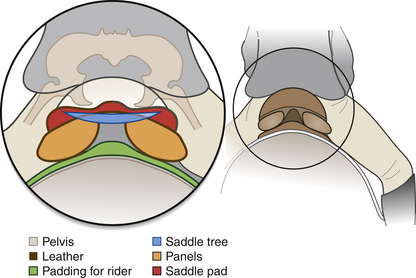
Figure 13.12 Whereas the reins and legs of the rider are in relatively close contact with the horse, the rider’s seat is separated from the horse’s back by layers of padding. This prevents back injury to the horse but also disperses signals from the rider. This compromise renders the rider’s seat a less salient signal locus than the reins or legs.
(Reproduced with permission of Wiley Blackwell.)
Positive reinforcement
The fundamental reason negative reinforcement is used so extensively in horse-training is because of the enforceability of signals such as rein pressure, compared with the difficulty of positively reinforcing (‘stop’ and ‘go’) responses after they have been randomly produced (see Ch. 4).
Positive reinforcement certainly has a role in horse-training, especially in the form of secondary reinforcement that takes the form of target and bridge training (clickers, clicker words, etc.). Because of its enormous value in rapidly reinforcing otherwise hard-to-reward behaviors, and behaviors offered by animals at a distance from the trainer, this approach should be incorporated into training. It is also of great value in counter-conditioning a horse’s attempts to avoid aversive objects. Positive reinforcement is optimally used when the horse responds from light signals. Delaying positive reinforcement until this stage of the horse’s training is consolidated avoids clashing of negative and positive reinforcement and hastens the horse’s responses to light signals (Figs 13.13 and 13.14).
Strategic timing of training sessions
McCall et al39 examined the effect of the number of trials per training session on avoidance learning and found that, regardless of the total number of learning opportunities, moderate repetition of training activities is needed for efficient learning. However, learning occurs throughout life in parallel with any training regime. It is unlikely that the horse regards training or schooling sessions as opportunities to concentrate on important lessons. Instead, it is more likely that it is simply aware of an increased intensity of signaling from its rider, provided that it has not habituated to the signals.
The temporal distribution of training trials influences equine learning abilities. Experimentally this was demonstrated when ponies subjected to a single weekly training session (to clear a small hurdle in order to avoid a mild electric shock) achieved a high level of performance in fewer sessions than ponies trained twice weekly or daily.40 This would seem to highlight the importance of giving horses breaks from intensive schooling so that they can better process information. Turn-out periods after intensive training are thought to allow maturation and consolidation of associations. However, from a neurological viewpoint, it is not clear exactly how or why this should occur. It would appear to involve the transformation of operant actions into habits and so may be connected with the maturation and consolidation of neural pathways. That aside, giving young horses significant breaks during training certainly seems to help avoid sourness (the psychological effects of over-training).41
One stimulus for one response
It is important to train a single response from a single and distinct signal, where possible. Pavlov coined the term ‘overshadowing’ to describe the diluting effect a stronger signal has over another if applied simultaneously.42,43 Overshadowing is a common error in contemporary horse training. So in early training ‘go’ should always be elicited by both of the rider’s legs, without the simultaneous application of other signals, such as a click of the tongue or a shuffle of the seat. To do so may reliably overshadow the critical signal from leg pressure and result in the horse appearing ‘dead to the leg’. The ‘stop’ signal should initially be trained only by pressure from both reins equally, and ‘turn’ with pressure from the rein on the side to which the turn is to be made (direct turn). Later on, the horse may also learn to turn from the closing (toward the midline) of the rein (indirect turn). These things must be consolidated; it is incorrect to use the seat for stop before the horse has a consolidated stop response from the reins. Similarly it is important that the horse leads proficiently from pressure on the head collar rather than simply ‘following’ (classical conditioning) the handler, as this affords greater control in all situations and prevents the horse from practicing and making a habit of undesirable behavior. It also affords consistent stimulus control compared to the vagaries of the human gait as a form of stimulus control.
One response at a time
If the basic trial-and-error responses are not consolidated, then two or more signals should not be applied simultaneously. Moreover, it can be particularly destructive to the horse’s learned responses if ‘stop’ and ‘go’ pressures are applied at the same time at any stage of its life. This is the most common cause of chronic conflict in performance horses. The elements of half-halt cues (see Glossary) should not be simultaneous but be fractionally separated in time. As the horse’s learned responses become more consolidated over time, signals can be given closer together, because their effects have proceeded beyond operant action to become habit. However, even with potentially less-destructive combinations of responses, conflict can develop and training efficiency plummets. For example ‘go’ and ‘turn’, or ‘go’ and ‘leg-yield’ (‘turn hindlegs’) should also not be applied simultaneously, otherwise the integrity of the constituent responses becomes dulled.
Foundation training under-saddle
Importantly, there are three phases to the training of the basic responses both in-hand and under-saddle during ‘breaking-in’ or, more correctly, foundation training in horses:
• the mild cue, followed contiguously by
• an increase in pressure of the signal, and ending with
• release of the pressure at the completion of the desired behavior.
This scheme is negative reinforcement, and it induces a small amount of stress by design, so that the animal is propelled to trial various behaviors. Generally speaking, all resources that satisfy an animal’s motivation raise alertness. Subsequently when the horse trials the behavior deemed ‘correct’ by the trainer, the pressure must be released immediately. In all pressure-release training, it is important to increase the pressure if there is no response; and to release the pressure immediately at the onset of the correct behavior. The release of pressure is the intrinsic reinforcer. Contiguous verbal praise is largely redundant and may even be counter-productive if it has the potential to confuse the horse.
The rider’s aim should be to reduce the stress by aiming to increase the subtlety of the signals once successful trials have taken place. This mechanism, pressure-release training, is the broad scheme by which all the basic locomotory responses are established in foundation training, and re-established in eliminating problems. These locomotory responses cover the basic movements of the horse in the two dimensions (anterior/posterior; lateral forelegs/hindlegs). In-hand these are ‘go’, ‘stop’ and ‘turn hindlegs’. Under-saddle, ‘go’, ‘stop’, ‘turn forelegs’ and ‘turn hindlegs’ encompass all the possible movements of the horse in the two dimensions. Generally speaking it is not essential to train the turn of foreleg responses as part of in-hand training as there are no sharp turn requirements in that modality.
In under-saddle training the rider draws the reins toward his hips by closing the fingers on the reins and when the horse stops/slows the rider releases that pressure. The rider squeezes the horse’s sides with both his calves and when the horse goes forward, the squeezing stops. Similarly, a single rein trains the turn steps of the forelegs (Fig. 13.15A), and the single leg application trains the turn steps of the hindlegs (Fig. 13.15B). The timing of this sequence of operant cues is critical. Problems right across the board in training (ranging from horses not leading into trailers to rearing under-saddle) result from the violation of this sequence, yet a description of it is a rarity in contemporary equine training texts.
Foundation training in-hand
Training the horse in-hand is best begun with the trainer facing the horse, on the horse’s nearside, holding the lead rein in the left hand 20 cm or so from the horse’s chin. The horse should be wearing a thin rope halter so that the pressure is more readily perceived than with a thicker leather halter. If the horse has no leading response the entire lesson should be conducted in an enclosed yard. Generally the ‘go’ and ‘stop’ responses can be trained simultaneously through their various qualities because they arise in the training of each other.
During training in-hand, the handler pressures the lead-rein in the anterior direction for ‘go’, and in a posterior direction toward the horse’s neck for ‘stop’. For ‘head down’ the lead direction is vertically downwards, and for ‘turning the hindlegs’ the long whip is used for tapping the relevant hindquarter.
Go and stop
When training a young horse to lead for the first time, it is sensible and safe to stand facing the horse (but not directly in front of it) to the side at approximately 45° to the midline. Forward leading pressure is then applied and released as soon as the horse completes a single step. This is repeated until the horse steps easily from light pressure. The horse is then trained to move two steps of the forelegs (one stride). When two steps can be elicited from light lead rein pressure, further steps are trained. Similarly, the stop is trained through increasing the pressure significantly during the time when the horse is not stopping or slowing, and releasing it as soon as locomotion has ceased. However, training a step backwards from the ‘stop’ pressure deepens the stop response because it isolates the appropriate muscles that are implicit in stopping and slowing responses. Again, it is essential that pressure is released as soon as a single step backwards is achieved. When the horse responds to light signals throughout his training in-hand and under-saddle, positive reinforcement should be used to further reinforce responses. Secondary positive reinforcement is the most convenient. It is now appropriate to face in the same direction as the horse and elicit the same forward and stopping/slowing leading signals with lead rein pressure.
When the lead response is trained so that many steps are offered immediately from an initial light lead pressure, this will result in the horse maintaining speed (rhythm) in its stride. However if the horse slows down during leading, this is retrained by pressuring it more strongly during this loss of rhythm and releasing at the completion of the quicker step. On the other hand, if the horse quickens its pace, slowing signals are applied. Training the horse to offer faster and slower steps by pressure and release consolidates training of speed maintenance. Next it can be trained to move forward in a straight line. This is achieved by stopping and repeating any drifting steps until the horse steps straight ahead. A consistent contact is trained by stopping the horse as soon as the contact becomes inconsistent. Longer steps can be trained so that they also occur from a light contact, and finally these responses are tested and trained in different environments.
Increasing the pressure when the horse is slow to respond results in an obedient response. Vibrating the lead rein during the period of enforcement is sometimes more effective than pulling it, because it increases the aversiveness of the intervention. A byproduct of successful training of rhythm in ‘go’ and ‘stop’ responses is that the horse will stay in the one place without being maintained by pressure. The handler should be able to move away without the horse following. If the horse steps forward, the handler should correct him so that the horse learns to be under stimulus control. In other words, he shouldn’t move until the correct signal is given. It is important to test that the pressures move the horse to go forward and stop, and this can be achieved when the handler is standing still (so as not to cue the horse) and pressuring the horse to go forward and stop. When this has been achieved, horses become relaxed and obedient.31
Drifting sideways can be corrected by increasing the lead pressure in the opposite direction during any drift. The ‘stop’ response should also be trained to be adjustable so that the stride can be shortened. The final quality to be trained is that the horse stops anywhere. Therefore the handler should gradually increase the challenges of the training environment.
Sideways
It is also useful to train the horse to step sideways, away from the handler from pressure on its hock with the tapping of the light whip (Fig. 13.16). (It is important the whip is never used as a punishment as it will transform from a signaling device to one that triggers panic and precipitates conflict.) At first even the slightest step is reinforced with the cessation of the tapping, but after some success, progressively larger steps across the midline are shaped. The response is trained through the cessation of the whip-tap until it is offered immediately after a very light double-tap of the whip. During the early training of this response the horse will often curl its neck. The aim should be to make it move smoothly, with a straight body and neck.
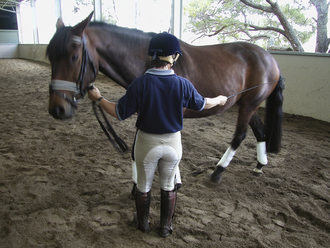
Figure 13.16 Train the horse to step sideways from pressure on his hock with the tapping of the light whip.
The tapping at the hock can progressively move up the sides of the leg and to the ribcage so that soon the handler’s fingers or eventually a voice command such as ‘Over!’ can initiate the step across. The use of the whip on the flank at the outset is inadvisable since it tends to promote flinching and kicking-out because, typically, this area is extremely sensitive.
Lowering the head
It is also useful to train the horse to lower its head in response to pressure, because of the relaxing effect of this posture as a result of the baroreceptors in the carotid artery that lower heart rate and blood pressure when the head is lowered. In addition, given the horse’s apparent lack of higher mental abilities, it seems possible that posture can affect arousal and therefore responses by association. So, because a lowered head position is associated with activities that occur when horses are calm, such as grazing and drowsing, training the horse to lower its head is often associated with a rapid and dramatic reduction in tension. Operant conditioning of head lowering is achieved by pressuring the horse’s head directly downwards with the lead or reins until the horse lowers a little and releasing the pressure immediately (Fig. 13.17). Thus the horse consistently finds comfort, and calmness results. As with all responses, it is important to reinforce every good try according to the rules of shaping (see Ch. 4). Then progressively more immediate responses can be targeted, followed by the ability to lower all the way down to the ground in one smooth response.
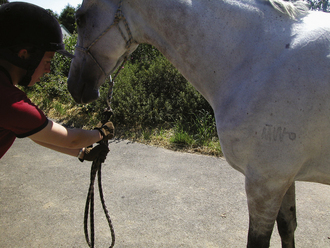
Figure 13.17 Head lowering is achieved by pressuring the horse’s head directly downwards with the lead or reins until the horse lowers a little, and releasing the pressure immediately.
Any lack of straightness in the neck is attended to by using the rein to straighten the neck. The use of the rein in this way reduces the unhelpful effect of random neck movements laterally. Next, slightly faster downward movements of the horse’s head are targeted, and then finally the horse is tested and trained in various other environments.
Refinement under-saddle and in-hand
Refinement of the basics includes the conditioning of appropriate responses to signals of increasing lightness. The extent to which this can be achieved is often limited only by the handler/rider’s ability to deliver more subtle signals. Unfortunately, as balance is a skill that takes time, practice and coaching to achieve, many riders struggle to be consistent when applying mild signals.
Assuming the horse has learned the basic responses, it can be trained to offer them in response to increasingly subtle signals. Lightness in all the signals is extremely desirable for both in-hand and under-saddle training. This is why self-carriage is so critical and why it should occur from the beginning of training.31 The horse’s neck and head should be in the desired outline when it learns to go forward and stop. The rider should frequently release the reins to test that the horse is comfortable to carry its head in whichever position. If not, the horse will be leaning on the bit or straining to maintain an impossible head carriage and the resultant pain will lead to some adverse behavior, habituation or learned helplessness.
Other features of refinement involve combining basic responses to build advanced movements and providing additional signals for these and indeed basic responses. For example, the half-pass involves a cascade of responses of ‘go’, ‘lateral flexion and bend’, ‘turn forelegs’ and ‘turn hindlegs’. If such combinations do not arise from the lightest of pressure signals, then conflict behaviors are possible and the single constituent responses are subject to detraining.
It is tempting for novice trainers to use many cues at once with none being consolidated properly. They often use voice commands haphazardly together with leg or rein aids. In breaking-in or retraining the basics, trainers must train one stimulus for one (shaped) response. Before adding other cues, trainers must be sure that the basics are well established and alternative behaviors are no longer trialled.31 When the basic responses are consolidated and are under stimulus control (see Discrimination in Ch. 4), it is possible to add an extra signal to elicit a particular response. For example, a vocalized command may be added to the rein signal for the horse to stop.
Resolution
Unwelcome behaviors (see Ch. 15) can be seen as dysfunctions in negative reinforcement and so can be successfully modified by retraining the pressure-release regime of the problematic learned responses. For problem behaviors that are induced by dysfunctions in negative reinforcement, these constitute 9 operant responses:
1. Upward transitions from light lead rein(s) signal [in-hand], or light leg signals from both of the rider’s legs [under-saddle].
2. Faster tempo of the steps from light lead rein(s) signal [in-hand], or light leg signals from both of the rider’s legs [under-saddle].
3. Longer steps from light lead rein(s) signal [in-hand], or light leg signals from both of the rider’s legs [under-saddle].
4. Downward gait transitions (including step-back) from the light lead rein(s) signal [in-hand], or both light reins signal [under-saddle].
5. Slowing the steps from the light lead rein(s) signal [in-hand], or both reins [under-saddle].
6. Shortening the steps from both reins from the lead rein(s) [in-hand], or both light reins signal [under-saddle].
7. Direct turn of the forelegs (light opening rein away from the midline) [under-saddle only].
8. Indirect turn of the forelegs (light closing rein toward the midline) [under-saddle only].
9. Yielding (turn) sideways of the hindlegs from the light double whip-tap [in-hand], or the rider’s light single leg signal [under saddle].
One of the most important things to remember is that each of these operant reponses must be easy for the horse to discriminate from other signals. It is also important that (re)training progressively targets consistent outcomes. The aim is to consolidate certain responses so that they become habits.
Retraining in-hand and under-saddle
With a young horse, or a horse in retraining, it is fundamental to (re)train the horse to go, stop, turn the forelegs and turn the hindlegs. But these responses must not be produced haphazardly with different outcomes each time or the horse will become confused. Targeting consistent outcomes is achieved by progressively deleting random behaviors that arise from the handler/rider’s signals. However, because of the range of qualities of desirable behavior, the trainer must progressively train each separate quality of response. This involves ignoring the less salient undesirable qualities (such as head carriage) that can be successively targeted at a later point in the training process or that may rectify themselves because they are emergent properties of other qualities. For example, a rounded head carriage is directly related to lightness of stimulus control and maintenance of speed and line.
Shaping requires that the trainer initially reinforces every ‘good try’. The horse may or may not trial all sorts of undesirable responses as a result of the maintained or increased pressure but it rapidly learns that the pressure is released only when it offers specific responses. Then the trainer can begin to target those specific responses so that the same response is reinforced. This brings the desired response under stimulus control.
When responses arise from light signals, it is useful for both consolidation purposes and deeper relaxation to use positive reinforcement. Generally, secondary positive reinforcement is the most convenient. For example, use of a clicker or the distinct utterance of ‘good boy’ at the exact moment of the correct response followed a couple of seconds later by a primary reinforcer such as food or tactile rewards such as wither caressing.
Training the basic responses in-hand and under-saddle involves gradually gaining complete control of the horse’s locomotory responses. When this is achieved, random movements of the neck are generally absent. If they do occur, they can now be deleted and horses universally show relaxation with the predictability of the signals and the controllability afforded to the horse by his now secure umwelt (behavioral world). The order in which qualities are trained should reflect the problem potential they offer. The first quality is simply to produce a basic attempt at the response. Then obedience is trained so that an immediate response arises from a light pressure signal.
The next quality to be targeted is the speed of the body and the subsequent rhythm of the leg responses. Faster and slower steps are reinforced and, later on, longer and shorter steps. Then the exact direction of the horse is targeted so that any drift off the chosen line of the handler/rider is corrected. This results in the body and neck becoming straight, thus eliminating crookedness and drift. Next, the connection to the handler/rider is refined to be consistent. Finally, the horse is trained in various environments of increasing challenge potential so that it performs all the responses with all of the above qualities wherever and whenever required. The desired qualities of the basic responses should be shaped as follows:
1. basic attempt – an attempt or crude response
2. obedience – immediate and light
3. rhythm – self-maintained speed (tempo and stride length)
4. straightness – self-maintained line, straight neck and body
5. contact – self-maintained leg and rein connections
6. proof – performs response with above qualities whenever and wherever.
It is important to progressively target responses of the same quality in each session, or progressively build on the quality during each session, and not to relax standards during training. Once modified, ‘problem’ behaviors can be managed by trainers through the frequent checking and refinement of the basic operant responses.
Sometimes, certain pressures applied with conventional equipment are insufficient to produce a response. This is particularly true when retraining a horse that has habituated to a pressure-release signal. For example, in leading the horse forward, the horse may not be sufficiently motivated to step forward from lead pressure. Therefore the lead signal may require extra empowerment from an accompanying whip-tap on the shoulder. The horse must be able to lead reasonably well before you attempt this. Also, if you cannot touch your horse with the whip without him showing an excessive flight response, then habituate him to it by laying it on him then stroking him with it until he is relaxed.
It is important that strong lead pressure is not used in conjunction with the whip-tap, but instead mild pressure of the lead accompanies the whip-tap so that the whip-tap adds extra motivational power to the lead pressure. Such empowerment may be necessary in the case of leading a resisting horse into a float. Assisting the lead response with the whip-tap is inadvisable in early training of the lead forward response in a naïve horse because adding the whip-tap to a novel lead stimulus can result in overshadowing and therefore no learning of leading from the lead-rein.
When the six qualities of each response are trained and then consolidated, the horse is secure as it will have no source of confusion in its training.31 Like the well-adjusted horse in its natural habitat, his umwelt is predictable and controllable. As we saw in the case study of police horse training (see Ch. 4), calmness is a feature of horses that have established consistent and predictable learned responses. Establishing calmness is not always an easy or speedy task in retraining.
When the relationship between stimulus and response is variable, confusion is the result and conflict behavior involving tension is almost inevitable. This is particularly true since training horses inevitably involves the use of the pressure/pain continuum. If pain is inescapable, unpredictable and uncontrollable, it is small wonder that the horse employs inbuilt antipredator mechanisms to actively remove the incursion into his otherwise tranquil life. If these coping mechanisms fail, then the horse may seemingly give up, become less vigilant and begin the downward spiral to learned helpessness. While the trainer might rejoice in the transformation of the horse to a seemingly more unperturbed state, the calmness has come about for the wrong reasons. It is therefore every horse owner’s responsibility to recognize the exploitative nature of human/horse interactions, and to ensure that all interactions are as humane as possible and ubiquitously centred on learning theory and the training principles that arise from it.
Summary of Key Points
• One of the abiding obstacles to effective training of ridden behavior is the rider’s poor understanding of learning theory.
• Equine education is clouded by unhelpful terms such as ‘natural’ and ‘unnatural’ ‘aids’, and the use of anthropomorphic terminology in describing horse behavior as well as the implication that the horse has some moral culpability in its training.
• Contemporary horse-training dogma provides many obstacles to effective equine learning such as training too many responses simultaneously and overshadowing of one signal by another.
• If novice riders used the principles of operant conditioning so that they did not apply conflicting signals as they learned to balance, many riding school horses would feel the immediate benefit.
• Trainers should employ positive as well as negative reinforcement in their training.
• Trainers should become aware of the priority and importance of operant conditioning and remember the 9 operant responses that form the core of the horse’s training in-hand and under-saddle and that dysfunctions in these signal response entities are central to problem behaviors.
• Horse riders, coaches and trainers should recognize their ethical obligation to train horses in ways that align as closely as possible with learning processes.
Case study
Unexpectedly, a 12-year-old half-bred gelding refused to load at the end of a show. The two-horse trailer being used that day was the vehicle in which he normally traveled. Despite an enormous variety of attempts to cajole him into loading, he continued to back away from the ramp. He was eventually forced in with a combination of ropes and whips. Since then he seemed phobic of the trailer and required considerable coaxing even to feed near it. The owners felt that he may have worked out a way of avoiding going to shows.
Conferring subjective mental machinations on a horse that refuses to load into a trailer is an unconstructive approach. Even with the most difficult horses, trailer loading is a relatively simple process if it is considered a function of the leading response. When the horse is relatively unconditional in its leading responses, it will lead anywhere, including into the trailer.
The gelding was retrained to lead, using a thin rope halter. This provided maximum control of his ‘stop’ and ‘go’ responses. First he was tested in the qualities of the ‘go’ and ‘stop’ responses away from the trailer. Subsequent retraining also took place away from the aversive stimulus that the trailer represented.
The ‘go’ response was thoroughly trained as there was an inherent weakness in the normal leading stimulus supplied by the lead-rein pressure. Because the lead-rein pressure at the top of the gelding’s head was not sufficiently aversive compared with the aversiveness of the stimuli he was expected to face, such as the trailer, his response to it needed to be deepened. This was achieved by combining the lead pressure with incessant tapping from a long whip between the elbow and shoulder.
At first the horse did not ‘go’ and ‘stop’ immediately from the respective pressures, so stronger pressure and quicker release at the onset of correct behavior were deployed. This also resulted in his becoming maximally responsive to a light pressure. The obedience of the ‘stop’ response was enhanced by training a step-back from the halt using pressure-release. When the gelding was obedient, the long whip was introduced to fortify the lead response that was already installed. This association was established because it was considered likely that it was going to be necessary when it was time to face the trailer. As the ‘go’ lead pressure was employed, he was tapped on the ribcage as in under-saddle training (Fig. 13.18).
The leading response was deepened by making him step back using a light signal then immediately applying forward lead pressure coupled with mild tapping as above. Crucially, the trainer was careful not to cease the mild lead pressure and tapping until the horse stepped forward, no matter what resistance he offered. Secondary positive reinforcement (‘Good boy!’ at the precise moment of the correct response followed by wither caressing) was used to reinforce responses from light lead signals.
Next the gelding was trained to move his hindquarters sideways from both sides. This was established to assist in straightening the horse if he trialed crookedness during loading onto the trailer. Facing the hindquarters of the horse, holding the lead with the hand that was closest to the horse, and holding the long whip with the other hand, the trainer used the lead rein with the appropriate pressure to prevent him going forward, rather than sideways with the hindlegs. Using the whip to tap the tarsal region, the trainer increased the tapping intensity until the instant the horse stepped across. This was repeated until the response was reliable. The horse was then ready to be trained to load onto the trailer.
Facing the trailer for the first time, the gelding stopped and therefore failed his basic attempt. Although training him to load into the trailer was the ultimate goal, the proximate targets were simply to take steps forward toward the trailer. To achieve this, the trainer:
1. Only ever tapped when he also had forward direction pressure on the rein (this fortified the lead response by association).
2. Only ever tapped when the horse was not going forward (never when he was).
3. Increased the intensity of the tapping, but not the lead pressure, when he felt there was no response within a reasonable period.
4. Never had increasing gaps between taps.
5. Softened both lead rein and ceased tapping the very instant the horse moved his foot/feet forward.
6. Used the ‘stop’ response to delete leaping onto the trailer; allowed him only to step onto it.
7. Immediately applied mild lead and whip-tap pressure if the horse rushed during backing out of the trailer and continued to do so until he stepped forward, no matter how far back he went.
8. Used secondary positive reinforcement (‘Good boy’ followed by wither caressing) when he stepped from light lead signals.
Further repetitions and mild pressure of rein and whip-tap resulted in the horse developing a rhythm in his steps onto the trailer. Whenever he slowed or quickened, these inappropriate responses were dealt with progressively. With the focus on training straightness, it was important to step forward and back all over the trailer, especially the area of the roof overhang. (This is often a problem area where horses learn to balk). The gelding was trained to go forward and demonstrate he was willing to place his front feet anywhere in the trailer region. At this stage, wither scratching and voice praise associations were employed profusely to reinforce his learned responses. The horse no longer shows any evidence of reluctance to approach or enter the trailer.
References
1. Voith VL. Pattern discrimination, learning set formation, memory retention, spatial and visual reversal learning by the horse. Thesis, Ohio State University, Columbus, 1975.
2. Wolff A, Hausberger M. Learning and memorisation of two different tasks: the effects of age, sex and sire. Appl Anim Behav Sci. 1995;46(3/4):137–143.
3. Mal ME, McCall CA, Newland C, Cummins KA. Evaluation of a one-trial learning apparatus to test learning ability in weanling horses. Appl Anim Behav Sci. 1993;35(4):305–311.
4. Harris PA. Review of equine feeding and stable management practices in the UK concentrating on the last decade of the 20th Century. The role of the horse in Europe. Equine Vet J Suppl. 1999:46–54.
5. German National Equestrian Federation. The Principles of Riding – The official instruction handbook of the German National Equestrian Federation. Kenilworth, UK; 1997.
6. Faverot de Kerbrech F. The methodical training of the saddle horse after the last method of Baucher, recounted by one of his pupils. Paris: Jean-Michel Place, 1891.
7. McLean AN, Mclean MM. Academic Horse Training: Equitation Science in Practice. Victoria, Australia: Australian Equine Behaviour Centre, 2008.
8. Ödberg FO, Bouissou MF. The development of equestrianism from the baroque period to the present day and its consequences for the welfare of horses. The role of the horse in Europe. Equine Vet J Suppl. 1999:26–30.
9. Jeffcott LB, Rossdale PD, Freestone J, et al. An assessment of wastage in thoroughbred racing from conception to 4 years of age. Equine Vet J. 1982;14:185–198.
10. Bailey CJ. Wastage in the Australian Thoroughbred racing industry. Rural Industries Research and Development Corporation, Research Paper No. 98/52, 1998.
11. Dennett DC. Kinds of minds. London: Orion, 1996.
12. Derkensen FJ, Clayton HM. Is equitation science important to veterinarians? Vet J. 2007;174:452–453.
13. Williams M. Effect of artificial rearing on social behavior of foals. Equine Vet J. 1974;6:17–18.
14. Kiley-Worthington M. The behaviour of horses in relation to management and training. London: JA Allen, 1987.
15. Rees L. The horse’s mind. London: Stanley Paul, 1984.
16. Wiepkema R. Behavioural aspects of stress. In: Wiepkema PR, van Adrichem PWM. Biology of stress in farm animals: an integrative approach. Dordrecht: Martinus Nijhoff, 1987.
17. Schramm U. The undisciplined horse. London: JA Allen, 1981.
18. Goodwin D. The importance of ethology in understanding the behaviour of the horse. Equine Vet J Suppl. 1999;28:15–19.
19. Krueger K. Behaviour of horses in the ‘round-pen technique’. Appl Anim Behav Sci. 2007;104:162–170.
20. Warren-Smith AK, McGreevy PD. Preliminary investigations into the ethological relevance of round-pen (round-yard) training of horses. J Appl Anim Welf Sci. 2008;11(3):285–298.
21. Le Doux JE. Emotion, memory and the brain. Sci Am. 1994;June:32–39.
22. McLean AN. Cognitive abilities – the result of selective pressures on food acquisition? Appl Anim Behav Sci. 2001;71(3):241–258.
23. Houpt KA. The intelligence of the Horse. Equine Pract. 1979;1:20–26.
24. McGreevy PD. How animals learn: basic insights. Ain’t Misbehaving. The AT Reid refresher course for veterinarians. Proceedings 340, 11–15 June 2001. Published by the Post Graduate Foundation in Veterinary Science, University of Sydney; 2001:69–98.
25. Webster AJF. Animal welfare: a cool eye towards Eden. London: Blackwell Scientific, 1994.
26. Bermond B. The myth of animal suffering. In: Dol M, Kasanmoentalib S, Lijmbach S, Rivas E, van den Bos R. Animal consciousness and animal ethics: perspectives from the Netherlands. Animals in Philosophy and Science. Assen, The Netherlands: Van Gorcum; 1997:125–143.
27. Budiansky S. The nature of horses – exploring equine evolution, intelligence and behavior. New York: Free Press, 1997.
28. Deacon TW. Fallacies of progression in theories of brain-size evolution. Int J Primatol. 1990;11:193–236.
29. Beilharz RG, Luxford BG, Wilkinson JL. Quantitative genetics and evolution: Is our understanding of genetics sufficient to explain evolution? J Anim Breed Genet. 1993;110:161–170.
30. Feh C, de Mazieres J. Grooming at a preferred site reduces heart rates in horses. Anim Behav. 1993;46:1191–1194.
31. McLean AN. The mental evolution of the horse and its consequences for training. PhD Thesis, Institute of Land and Food Resources, University of Melbourne, Victoria, 2005.
32. Fédération Equestre Internationale. Rules for dressage events. 23rd edition, Lausanne, Switzerland; 2009.
33. McGreevy PD, Harman A, McLean AN, Hawson LA. Over-flexing the horse’s neck: a modern equestrian obsession? J Vet Behav. 2010;5:180–186.
34. McGreevy PD, McLean AN, Warren-Smith AK, et al. Defining the terms and processes associated with equitation. Proceedings of the 1st International Equitation Science Symposium. In: Broadford V, McGreevy PD, McLean AN, et al (eds.) Post-graduate foundation in veterinary science. Sydney: 2005; 10–43.
35. Fédération Equestre Internationale. Dressage Handbook Guidelines for Judging. Lausanne, Switzerland; 2007.
36. Decarpentry AEE. Academic Equitation. London: J.A. Allen, 1949.
37. Karl P. The twisted truths of modern dressage. Brunsbek, Austria: Cadmos, 2008.
38. Nicol CJ. Equine learning: progress and suggestions for future research. Appl Anim Behav Sci. 2002;78(2/4):193–208.
39. McCall CA, Salters MA, Simpson SM. Relationship between number of conditioning trials per training session and avoidance learning in horses. Appl Anim Behav Sci. 1993;36(4):291–299.
40. Rubin L, Oppegard C, Hintz HF. The effect of varying the temporal distribution of conditioning trials on equine learning behaviour. J Anim Sci. 1980;50:1184–1187.
41. van Dierondonck M. Assessment of ethological methods as a diagnostic tool to determine early overtraining in horses. In: Minero M, Canali E, Warren-Smith A, et al. (eds.) Proceedings of the 2nd International Equitation Science Symposium. Milan, p.13; 2006.
42. Hull CL. Principles of behavior. New Haven, CT: Appleton-Century, 1943.
43. Miller RM, Barnet RC, Grahame NJ. Assessment of the Rescorla–Wagner model. Psychol Bull. 1995;117(3):336–363.
